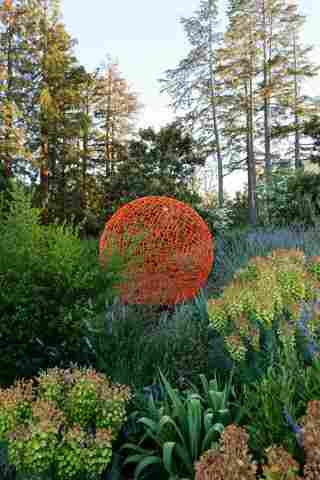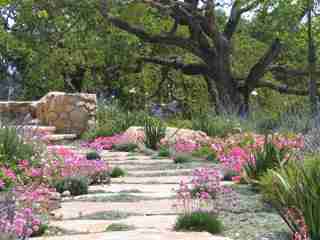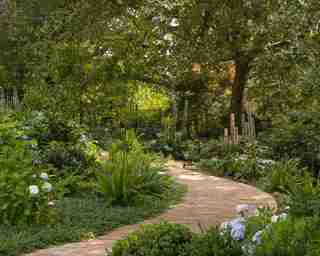Create a Color Palette for Your Garden
It’s easy to fall for flowers in every color of the rainbow when you’re at the nursery. The result, though, can be an incohesive palette for your garden. “As with all good design, landscaping choices are as much about what you’re not doing as what you are doing,” says Dustin Moore, who heads up Strata , a San Francisco landscape architecture firm, with Todd Cole. Their advice: Choose two hues, plus one accent shade if you like, and stick to them. If you’re finding it difficult to pick favorites, the duo suggests creating a neutral backdrop with big sweeps of grasses or shrubs, then adding color through annuals in the foreground of your planting beds. “That way you can strip the lower part of the beds and change them up every season,” says Moore. Here are four of the designers’ favorite color palette ideas.

Pair opposites.
When it comes to dreaming up a palette, the classic color wheel is your friend. Hues on opposite sides of the wheel will typically work well together. “If a client likes purple, for example, we’ll pair it with orange,” says Moore. In this yard, a decorative orange orb and euphorbia with tangerine-tinged blossoms pop against the lavender.

Choose hues in the same family.
Colors on the same side of the wheel—such as the pink and purple blooms in this yard—complement each other beautifully. And as with decor, white goes with anything, says Cole; here, it breaks up the more intense hues and brings a lightness to the scene.

Get your greens.
Flowers aren’t the only way to infuse color into your garden, and people often overlook the beauty of a green-on-green space. The key to creating visual interest with a single shade, say Moore and Cole, is to use a variety of textures, like these larger fleshy-leafed plants mixed with delicate ferns.
In this outdoor area, a monochromatic series of grasses planted en masse makes an impact but doesn’t distract from the view.
Go for gold.
Take cues from the landscape around you—often Mother Nature’s palette is right on track. For this property, the designers used grasses that turn golden to complement the yellow of the black-eyed Susans for a scheme that “has a wild feeling, as if it occurred naturally,” says Moore.